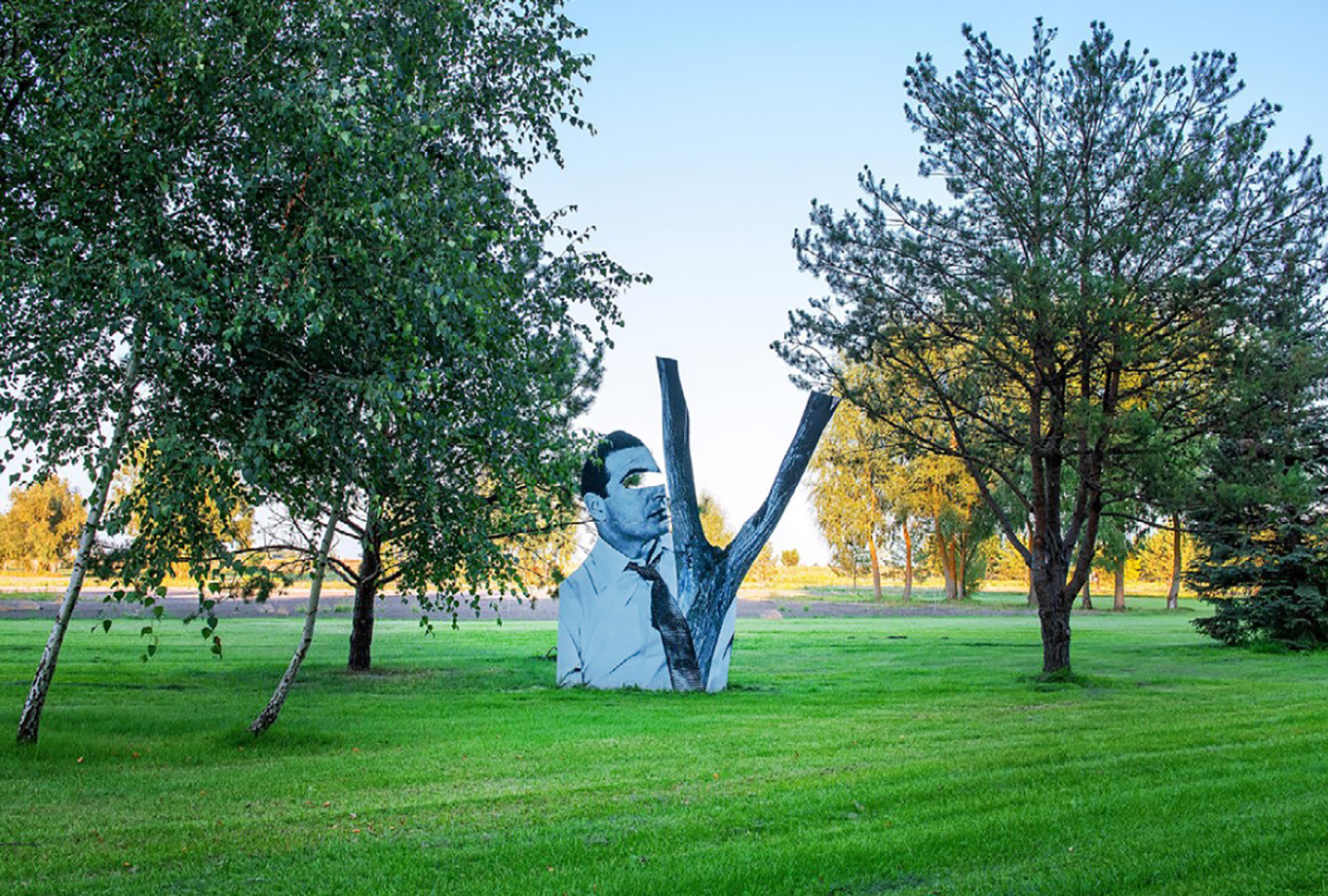Sergey Sviatchenko. From the LESS series

The Danish-Ukrainian artist Sergey Sviatchenko began to experiment with collages as a unique medium back in the early 1980s, shortly before his relocation to Viborg. His works were successfully exhibited at shows in Denmark, Germany, Italy, Austria, France, England, Canada and the USA. By the early 2000s, the entire art world knew Sviatchenko as a founder of contemporary collage that inspired hundreds of artists of the digital generation to embrace bold experiments. An architect by training, Sviatchenko consistently develops the principle of “architectural design” in his visual and literary poetry, implementing the ideas of plastic interpretations of textures, colours, forms and spaces within the framework of constructivist stylistic practices. One of Sviatchenko’s goals has been to integrate art images into architecture and to inlay his visual narrative with references to pop culture, history, his own experience and Freudian psychoanalysis.
Sviatchenko’s career began in the USSR, received a new impetus in the new Ukraine and blossomed in Denmark. Having escaped the space marred by socialist realism for the European art scene, Sviatchenko used his collages to reflect geographical, historical and metaphysical transformations. By using age-old symbols (the boundary between the conscious and the subconscious, the road, nature, time, childhood memories) in a way reminiscent of Andrey Tarkovsky’s 1975 film The Mirror, Sviatchenko attempts to reflect on his life by breaking it up into many encoded fragments. Much like Tarkovsky, Sviatchenko dearly values the materiality of memory and affect that, if Henri Bergson is to be believed, constitutes the basis of our perception of the present. The artist valorizes intuition as the force that prompts us to create, to become more self-aware in a moment of aesthetic delight and to fully fuse with the dynamic spirituality of the world.
The Less series, which brought Sviatchenko world fame as a revolutionary in the world of contemporary collage, was launched in 2004 in response to overloaded compositions in the works from the new era of data and marketing. The artist foregrounds the intertextuality of his Less collages by leaving no more than two or three elements in each. Creating visual contrasts by juxtaposing the objects in different textures and colours that interact and highlight one another, Sviatchenko develops a mythology of his own, and that mythology is rooted in surrealism. The compositions where the protagonist’s unseen presence gives way to natural elements is one example of the dominance of the unconscious in the artist’s visual poems.
An avowed modernist, the artist brings together the elements that might at first glance seem incompatible in order to convey the content of dreams and collective fantasies. Sviatchenko is constructing a surrealism of his own, existing on the intersection between symbolism and musical abstraction. It can also be seen in the artist’s use of tropes that convey uprootedness: each element is torn out of reality like a discrete memory snatched out of the whirlwind of thoughts. Sviatchenko attains the effect of aesthetic wonder or even poetic shock by combining diverse objects in compositional unity.
The British polymath Thomas Young and the German physicist Hermann von Helmholtz developed the trichromatic theory of colour vision. According to this theory, human retina has three types of photoreceptors with heightened sensitivity to shades of red, green and blue respectively. With that in mind, Sviatchenko showcases a harmonious and expressive palette with a deliberately limited selection of background colours that don’t overshadow the image and make it stand out more; this logic explains the unusual enlarged shots of the objects, fragments of portraits and architectural elements, body parts and artifacts of material culture. Photo collages throw familiar objects into stark relief and inspire reflections on the eclecticism and multilayer nature of contemporary culture.
Roksana Rublevska




